Are you a Quiet Speculation member?
If not, now is a perfect time to join up! Our powerful tools, breaking-news analysis, and exclusive Discord channel will make sure you stay up to date and ahead of the curve.
The month after a new set release is always an exciting time in the 5-0 dumps: full of churn, upheaval, and of course, ideas! In these periods, players are far less concerned with identifying metagame direction and innovating solutions to emerging trends; indeed, attempting to do so this early might prove a fool's errand anyway. Instead, their focus becomes consumed by the allure of the new, spurring them to test out any and every crazy idea they had during spoiler season against established Modern stalwarts and, most exciting of all, other players following their own crazy intuition.
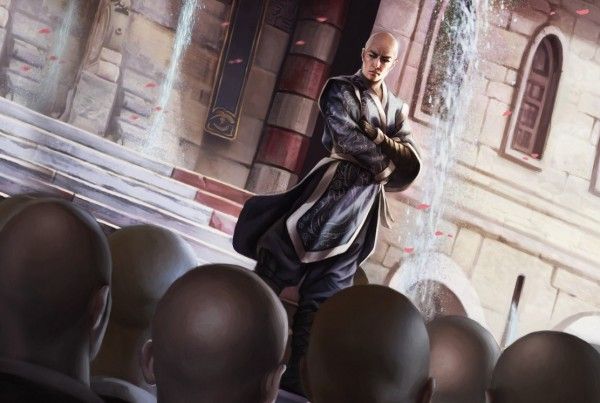
By now, the dust around Strixhaven has begun to settle, with hyped uncommon Clever Lumimancer ending up falling short of initial expectations. So the piles April successful enough to earn publication on Wizards's site all merit at least a closer look.
Token Trouble
First on our agenda are the myriad strategies wielding the littlest guys (tokens) in novel or unpredictable ways.
Time Warp Polymorph, FJ_RODMAN (5-0)
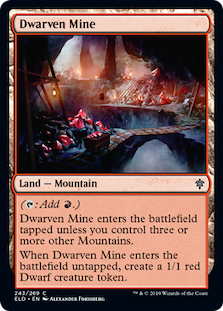 Time Warp Polymorph takes that old Dwarven Mine-into-Polymorph idea from February 2020 a step further, ditching Emrakul, the Aeons Torn for the brand-new Velomachus Lorehold. The million-dollar question: how come? Emrakul has long been considered the premier creature to cheat into play, and Polymorph, which sifts through the entire deck in search of any creature, one of the most reliable ways to do so.
Time Warp Polymorph takes that old Dwarven Mine-into-Polymorph idea from February 2020 a step further, ditching Emrakul, the Aeons Torn for the brand-new Velomachus Lorehold. The million-dollar question: how come? Emrakul has long been considered the premier creature to cheat into play, and Polymorph, which sifts through the entire deck in search of any creature, one of the most reliable ways to do so.
For one, Time Warp Polymorph has the option of playing like a regular Taking Turns deck, albeit one focused on generating value by stacking different planeswalker activations. Savor the Moment is perfect in this kind of shell, as untapping lands doesn't affect the ability of planeswalkers to activate each turn.
Then there's the combo element, which casts Polymorph or Transmogrify on a token made by Dwarven Mine to cheat out Velomachus Lorehold. Barring interaction from the opponent, the deck then wins on the spot. Lorehold swings and finds a Time Warp to cast in the top seven cards. Then, the deck takes its next turn and repeats the process until the opponent has lost! Again, Savor the Moment doesn't interfere with the plan, as Lorehold's vigilance prevents the untap phase from mattering too much during the combo.
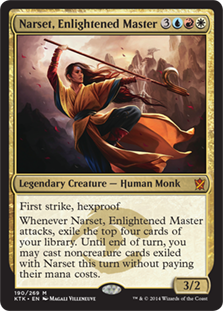 This combo is similar to one we've seen in the past utilizing Narset, Enlightened Master. But Narset only looked at the top four cards, not seven, making fizzling out a very real possibility. Lorehold is much more consistent, and can even be hard-cast for seven mana after Turns has grinded out enough land drops with its namesake effects and Wrenn and Six, making the deck less dependent on assembling the Polymorph combo or dodging small removal spells like Bolt and Push. The deck can and has also been built using Indomitable Creativity, so an optimal version has yet to be established.
This combo is similar to one we've seen in the past utilizing Narset, Enlightened Master. But Narset only looked at the top four cards, not seven, making fizzling out a very real possibility. Lorehold is much more consistent, and can even be hard-cast for seven mana after Turns has grinded out enough land drops with its namesake effects and Wrenn and Six, making the deck less dependent on assembling the Polymorph combo or dodging small removal spells like Bolt and Push. The deck can and has also been built using Indomitable Creativity, so an optimal version has yet to be established.
Mentor Breach, OURANOS139 (3-1, Preliminary #12289682)
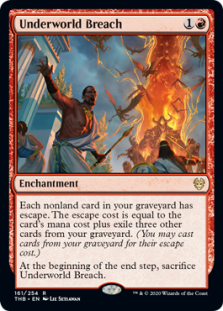 Mentor Breach is a deck that combines the combo potential of Underworld Breach and Emry, Lurker of the Loch with a Monastery Mentor plan for when opponents interact with the graveyard. The two plans mesh well, as they attack from separate angles, often requiring different kinds of hate, but also make good use of the same resource: cheap artifacts. This version seems particularly resilient, boasting a full set of Teferi, Time Raveler to ensure the combo materializes safely on the critical turn. And if all else fails, we should well know by now that 1-power prowess creatures are the real deal in Modern, especially alongside like-minded creatures!
Mentor Breach is a deck that combines the combo potential of Underworld Breach and Emry, Lurker of the Loch with a Monastery Mentor plan for when opponents interact with the graveyard. The two plans mesh well, as they attack from separate angles, often requiring different kinds of hate, but also make good use of the same resource: cheap artifacts. This version seems particularly resilient, boasting a full set of Teferi, Time Raveler to ensure the combo materializes safely on the critical turn. And if all else fails, we should well know by now that 1-power prowess creatures are the real deal in Modern, especially alongside like-minded creatures!
So Monastery Mentor is good enough to splash as an engine. Why doesn't Rakdos play it? Oh yeah! Because it's white! But... what if it wasn't?
Rakdos Pyromancer, CAPIN_AHAB (5-0)
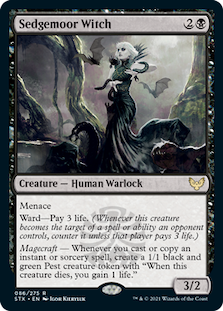 Cue this new build of Rakdos Pyromancer, which utilizes Sedgemoor Witch as a makeshift Mentor. Sure, Witch doesn't trigger off Baubles. But neither does Young Pyromancer, which gives the pairing some cohesion. Additionally, Witch covers for one of Mentor's historically deal-breaking Modern drawbacks: it costs three and dies to Lightning Bolt. For that to happen with Witch, opponents are forced to first Bolt themselves, a condition that meshes exceedingly well with an aggressive strategy in Modern's most aggressive colors. Tack on the repeated damage from Kroxa, Titan of Death's Hunger and Bolt, and opponents may have a tough time staying in the game even if they deal with Rakdos's actual attackers.
Cue this new build of Rakdos Pyromancer, which utilizes Sedgemoor Witch as a makeshift Mentor. Sure, Witch doesn't trigger off Baubles. But neither does Young Pyromancer, which gives the pairing some cohesion. Additionally, Witch covers for one of Mentor's historically deal-breaking Modern drawbacks: it costs three and dies to Lightning Bolt. For that to happen with Witch, opponents are forced to first Bolt themselves, a condition that meshes exceedingly well with an aggressive strategy in Modern's most aggressive colors. Tack on the repeated damage from Kroxa, Titan of Death's Hunger and Bolt, and opponents may have a tough time staying in the game even if they deal with Rakdos's actual attackers.
To further isolate against removal, Village Rites turns a doomed Pyromancer or other threat into a couple of cards, and can also be used proactively to "Skullclamp" those tokens. If it's all in the luck of the draw, who can argue with more draws?
Spelling Doom
The next couple decks cast a flurry of spells to take their small fries to the big leagues.
“Grixis Grow, EDHPLAYER (5-0)"
For a long while, I called my brand of Delver of Secrets decks "grow" decks; the name was retired in favor of "thresh" as I noticed an increasing disparity between what my decks were doing and what the original Gro-a-Tog and Miracle Grow strategies had in mind, which was more to control the pace of the game with instants and sorceries before using 1-2 highly efficient threats (such as Querion Dryad, Tarmogoyf, Psychatog) to close out the game in short order. In the creature-centric Modern format, such a deck has never really existed outside of some fringe-ish Dig/Cruise decks leveraging Young Pyromancer (the kind playing 8 or fewer threats).
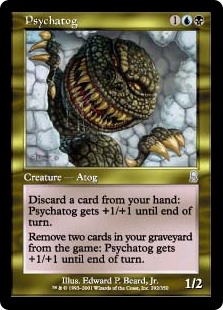 Preamble terminated! What we have here is Grixis Grow, a bonafide control deck with some reversibility. Depending on the matchup, it can stick a quick Sprite Dragon and then trade on resources until the opponent's dead, or trade on reseources until the opponent's out of steam, then stick a quick Sprite Dragon to put things away. This reversibility gives it an edge in the current metagame, where it can function as a midrange deck against the hyper-aggressive prowess and Shadow strategies or as a tempo deck against the big mana and combo decks.
Preamble terminated! What we have here is Grixis Grow, a bonafide control deck with some reversibility. Depending on the matchup, it can stick a quick Sprite Dragon and then trade on resources until the opponent's dead, or trade on reseources until the opponent's out of steam, then stick a quick Sprite Dragon to put things away. This reversibility gives it an edge in the current metagame, where it can function as a midrange deck against the hyper-aggressive prowess and Shadow strategies or as a tempo deck against the big mana and combo decks.
Grow decks traditionally rely on card advantage to put them ahead while trading resources, and this deck turns to control staples like Cryptic Command and Archmage's Charm to fill that role. It's also got Lurrus as a commander and 3 Snapcaster Mages in the main, making grinding with creatures a possibility.
Magecraft Blitz, KOKEMEN47 (5-0)
I'd be remiss to totally snub Clever Lumimancer, clearly the big story coming into the Strixhaven metagame. But as David penned last month, players soon found themselves divided over sinking too much into Lumimancer to make it work, and were finding that it wasn't necessarily worth running at all without some amount of shell redesign. Which brings us to Magecraft Blitz, a deck that stocks up on similar creatures (other buffing magecraft guys) to make that extra effort pay off.
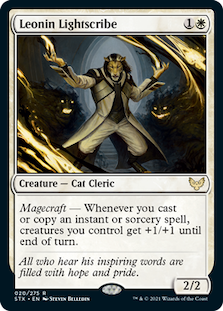 Like Lumimancer, both Leonin Lightscribe and Nivmagus Elemental generate big swings with cheap storm spells, in this case Ground Rift and Flusterstorm. The pricier Lightscribe buffs all the creatures, while Nivmagus stays big in future turns, giving each its niche in the deck and bringing the functional number of Lumimancers to 12.
Like Lumimancer, both Leonin Lightscribe and Nivmagus Elemental generate big swings with cheap storm spells, in this case Ground Rift and Flusterstorm. The pricier Lightscribe buffs all the creatures, while Nivmagus stays big in future turns, giving each its niche in the deck and bringing the functional number of Lumimancers to 12.
After all, Lumimancer isn't just some all-around-good prowess creature; it requires a specific shell to shine, and that's exactly what's been created here. Nonetheless, Monastery Swiftspear does make the cut, as it's way too efficient for this kind of spell-based aggressive strategy to leave out.
Size Ain't Nothing But a Measurement
There's plenty bubbling under Modern's surface; the little guys are just one such party ready for their shrieks and squeaks to be heard by the plenty. Which post-Strixhaven decks have you tickled?




